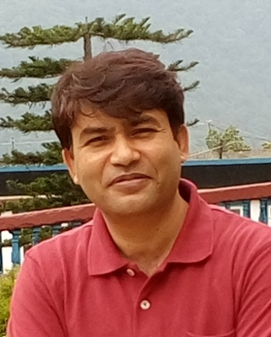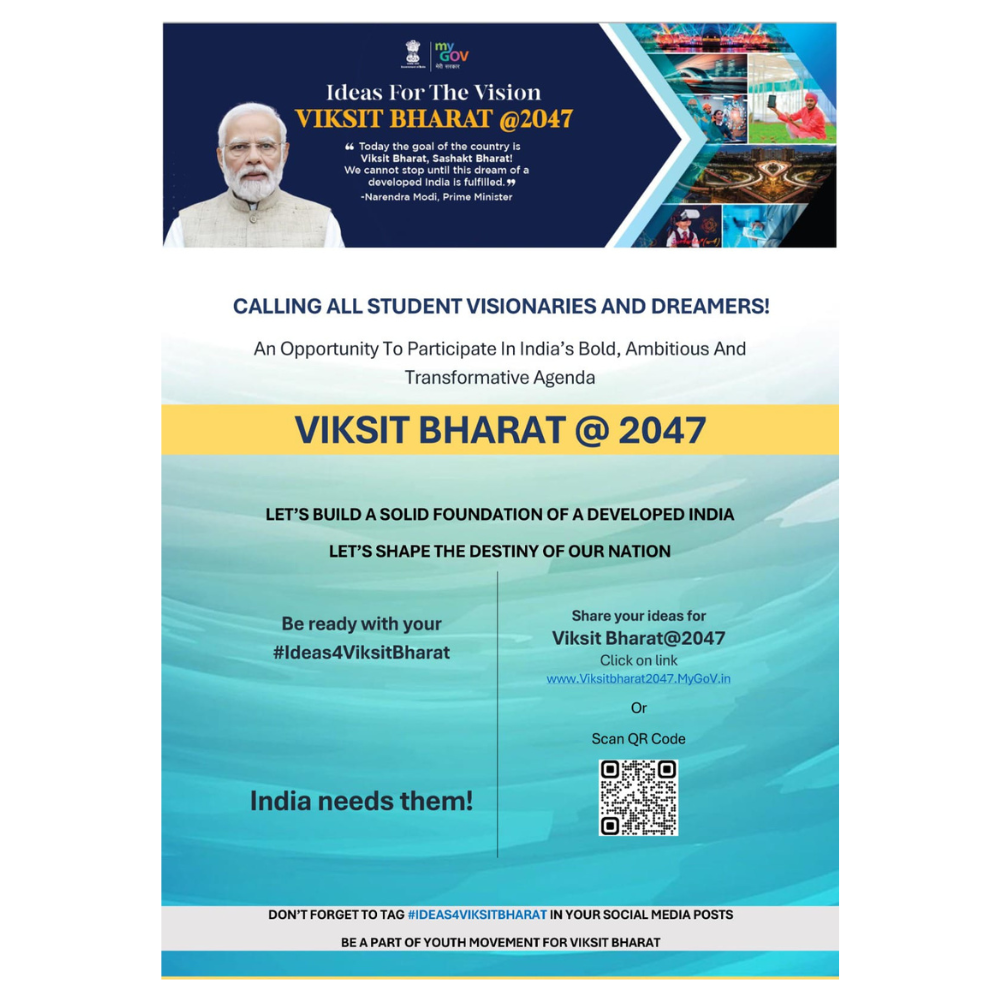
Assistant Professor (Senior Scale)
Qualification :
Ph.D. (Environmental Sciences; JNU)
- rajesh.ranjan@cub.ac.in
- rajeshkranjan@gmail.com
- :
Specialization : Environmental Chemistry, Biogeochemistry, Aquatic Geochemistry, Organic Geochemistry
EXPERIENCE : Dr. Rajesh Kumar Ranjan has received his M.Sc., M.Phil and Ph.D. degree from School of Environmental Sciences, Jawaharlal Nehru University, New Delhi, India. During PhD, he has migrated as an exchange doctoral student to Geology and Geochemistry department, Stockholm University, Sweden from 2006 and 2008 for his PhD work. Dr. Ranjan joined the Department of Environmental Science, Central University of South Bihar, Gaya, in 2010 as an Assistant Professor. He has experience of teaching and research spanning over more than 10 years.
Dr. Ranjan is a Life Member of Association of Global Groundwater Scientists (AGGS), Coimbatore, India; Fellow and Life Member of Geological Society of India, Bangalore; Life Member Indian Society of Apllied Geochemists) ISAG, Hyderabad and Life Member The Indian Science Congress Association, Kolkata. He has also served as a member of Regional Empowered Committee, East Central Zone, Ranchi, Ministry of Environment, Forest and Climate Change (MOEF&CC), Government of India from 2015 to 2019.
Dr. Ranjan has served as a reviewer in several journals such as Environmental Monitoring and Assessment (Springer), Environmental Earth Sciences (Springer), Applied Geochemistry (Elsevier), Hydrological Processes (Wiley), National Academy of Science Letters (Springer), Marine pollution Bulletin (Elsevier ), Arabian Journal of Geosciences; Environmental Science of Pollution Research (Springer) etc
Dr. Ranjan investigates the carbon dynamics, nutrients, and trace metal biogeochemistry in a variety of systems. But his research mostly focuses on Carbon and nitrogen stable isotopes studies in wetland system; Biomarker studies for recent environmental changes in freshwater wetlands, Estuarine and mangrove ecosystems; River biogeochemistry, Organic and inorganic pollution. In addition, his group also explore the groundwater contamination, particularly Uranium and Fluoride contamination in the groundwater.
- Publications:
- Kaushik H, Ranjan R, Ahmad R, Kumar A, Prashant, Kumar N, Ranjan RK* Assessment of trace metal contamination in the core sediment of Kabar Tal wetland, Begusarai, Bihar (India) Environmental Science and Pollution Research, 1-16 (Springer, In press)
- Aslam A, Singh SK, Roy M, Ranjan RK* 2020. Impact of urbanization on hydrogeochemistry and trace metal distribution on five major ponds in the holy city of Gaya, India; Groundwater for Sustainable Development 12, 100508 ( Elsevier)
- Parthasarathy P, Asok M, Ranjan RK, Swain SK 2020. Bioavailability and risk assessment of trace metals in sediments of a high-altitude eutrophic lake, Ooty, Tamil Nadu, India. Environmental Science and Pollution Research, 1-16 (Springer)
- Mittal A, Manjunath K, Ranjan RK, Kaushik S, Kumar S, Verma V. 2020. COVID-19 pandemic: Insights into structure, function, and hACE2 receptor recognition by SARS-CoV-2. PLoS Pathogens 16(8): e1008762.
- Khan, A., Gupta, A., Singh, P. Mishra, A.K, Ranjan, RK, Srivastava A., 2019. Siderophore-assisted cadmium hyperaccumulation in Bacillus subtilis. Int Microbiol .https://doi.org/10.1007/s10123-019-00101-4
- Ahmed R, Kaushik H, Ranjan RK* 2019. Assessment of microbial communities and heavy metals in urban soils of Patna, Bihar (India). Arabian Journal of Geosciences 12: 20. https://doi.org/10.1007/s12517-018-4188-9 (Springer)
- Satyapal GK, Mishra SK, Srivastava A, Ranjan RK, Prakash K, Haque R, Kumar N. 2018. Possible bioremediation of arsenic toxicity by isolating indigenous bacteria from the middle Gangetic plain of Bihar, India Biotechnol Rep (Amst). 2018, 17:117-125 (Elsevier)
- Ranjan RK*, Sinha, A.K, Gupta, D., Sappal, SM., Kumar A., Ramanathan AL., 2016. Sedimentary Geochemistry of Kabar Tal Wetland, Begusarai, Bihar, India. Journal of Applied Geochemistry (ISAG) 18, 414- 429.
- Singh G, Ramanathan AL, Santra S.C., Ranjan RK. 2016. Tidal Control on The Nutrient Variability in Sundarban Mangrove Ecosystem. Journal of Applied Geochemistry (ISAG) 18, 495- 503.
- Routh J, Bianchi TS, Hutchings, JA, Kuhry P, Ranjan RK, 2016. Organic carbon characteristics in Swedish forest soil trace post-depositional carbon dynamics, European Journal of Soil Science, 57, 492-503, (Wiley, imp. Factor 3.425 Citation: 01).
- Ranjan RK, Routh J,Klump JV, Ramanathan AL.,2015. Sediment biomarker profiles trace organic matter input in the Pichavaram mangrove complex, southeastern India, Marine Chemistry, 171, 44–57(Elsevier; imp. factor: 2.735) (Citation: 11)(Elsevier, Top 25 Most downlodaed Article, Rank 9- Environmental Science)
- Singh , G., Chauhan, R., Ranjan, R.K., Prasad, M.B.K., Ramanathan, AL.2015. Phosphorus dynamics in mangroves of India. Current Science, 108, 1874-1881. Imp. factor: 0.926 Citation: 04).13) Sappal, SM., Ramanathan AL.,Ranjan RK., Singh G., Kumar A 2014. Rare earth elements as biogeochemical indicators in mangrove ecosystems (Pichavaram, Tamil Nadu, India). Journal of Sedimentary Research, 84, 781-791. Imp. factor: 1.94. Citation: 06)
- Sappal, SM., Ramanathan AL.,Ranjan RK., Singh G., Kumar A 2014. Rare earth elements as biogeochemical indicators in mangrove ecosystems (Pichavaram, Tamil Nadu, India). Journal of Sedimentary Research, 84, 781-791. Imp. factor: 1.94. Citation: 06)
- Sappal, SM., Ramanathan AL.,Ranjan RK., Singh G. 2014.Sedimentary geochemistry of Chorao Island, Mandovi mangrove estuarine complex, Goa. Indian Journal of Geo-Marine Sciences (IJMS)4: 1085-1094. NISCAIR, Imp. factor: 0.313).
- Kumar RP,Ranjan RK, Ramanathan AL, Singh SK, Srivastava, PK 2014. Geochemical modeling to evaluate the mangrove forest water. Arabian Journal of Geosciences,8:4687 – 4702)Springer,imp. factor: 1.141)(Citation: 05)
- Ranjan RK, Singh G, Routh J, Ramanathan AL, 2013. Trace metal fractionation in the Pichavaram mangrove- estuarine sediments in southeast India after the tsunami of 2004. Environmental Monitoring and Assessment. 185:8197–8213, (Springer, imp. factor: 1.436)(Citation: 08).
- Ranjan RK*,Ramanathan AL, Parthasarathy P, Kumar, A., 2013. Hydrochemical characteristics of groundwater in the plains of Phalgu River in Gaya, Bihar, India. Arabian Journal of Geosciences,6:3257 – 3267) Springer,imp. factor:1.141). Citation: 23)
- Ranjan RK, Routh J, Ramanathan AL., Klump JV, 2012. Polycyclic aromatic hydrocarbon fingerprints in the Pichavaram mangrove-estuarine sediments, southeastern India, Organic Geochemistry.53: 88–94 (Elsevier; imp. factor: 2.785)(Citation: 11).
- Kumar, A., Ramanathan AL., Prabha, S., Ranjan R.K., Ranjan S., Singh G., 2012. Metal Speciation studies in the aquifer sediments of Semria Ojhapatti, Bhojpur district, Bihar. Environmental Monitoring and Assessment 184:3027-42(Springer, imp. factor: 1.436)(Citation: 16).
- Ranjan RK, Routh J, Ramanathan AL., Klump JV 2011. Elemental and stable isotope records of organic matter input and its fate in the Pichavaram mangrove-estuarine sediments (Tamil Nadu, India). Marine Chemistry126:163-172(Elsevier; imp. factor:2.735) (Citation: 29).
- Ranjan RK*, Ramanathan AL, Chauhan R., Singh G 2011.Phosphorus fractionation in sediments of the Pichavaram mangrove ecosystem, south-eastern coast of India. Environmental Earth Sciences62: 1779-1787(Springer,imp. factor: 0.678) Citation: 05.
- Ranjan RK, Routh J, Ramanathan, AL.,2010. Bulk organic matter characteristics in the Pichavaram mangrove-estuarine complex, south-eastern India. Applied Geochemistry, 25:1176-1186 (Elsevier; imp. factor: 2.176) (Citation: 23).
- Das SK, Routh J, Roychoudhury AN, Klump JV, Ranjan RK 2009. Phosphorus dynamics in shallow eutrophic lakes: an example from Zeekoevlei, South Africa. Hydrobiologia, 619:55–66. (Springer, imp. factor: 1.964)(Citation: 19).
- Anshumali, Ramanathan A.L., Singh G, Ranjan RK, and Tripathi P 2009. Chemodynamics of trace metal fractions in surface sedimentsof the Pandoh Lake, Lesser Himalaya, India. Environmental Geology. 57:1865–1879(Springer, imp. factor: 1.078) (Citation: 05).
- Ranjan RK*,Ramanathan AL and Singh G 2008. Evaluation of geochemical impact of tsunami on Pichavaram mangrove ecosystem, southeast coast of India. Environmental Geology, 55(3) 687-697 (Springer, imp. factor: 1.078). (Citation: 40)
- Ranjan RK,Ramanathan AL, Singh G, Chidambram S 2008. Assessment of metal enrichments in tsunamigenic sediments of Pichavaram mangroves, southeast coast of India. Environmental Monitoring and Assessment, 147:389-411 (Springer, imp. factor: 1.436) (Citation: 57).
- Ramanathan AL., Singh G, Majumdar J, Samal A.C, Chauhan R, Ranjan RK, Rajkumar K and Santra S.C 2008. A study of microbial diversity and its interaction with nutrients in the sediments of Sunderban mangroves. Indian Journal of Marine sciences, 37(2)-159-165. (Imp. factor: 0.310) (Citation: 43)
- Patent: NA
- Book:NA
- Awards
- UGC -JRF / SRF in Environmental Sciences (2006-10).
- Sat Paul Mittal JRF in Environmental Sciences for 2005-06;
- CSIR-NET in Earth, Atmosphere, Ocean and Planetary Sciences;
- GATE in Life Sciences 200.
- Bharat Vikas Award –Outstanding performance in Biogeochemistry/Environmental Science by Institute of Self Reliance (IRS), Bhubneshwar 19 Novermber 2017.
- Ministry of Earth Sciences (MOES), Government of India, Registration fee for 4th PAGES Open Science Meeting. The Past: A Compass for Future Earth, 13-16 February 2013, Goa, India.
- Department of Science and Technology (DST) Government of India travel grant for ClimECO2: Oceans, Marine Ecosystems, and Society facing Climate Change: a multidisciplinary approach. IUEM, Brest, France 23-27 August 2010.
- FORMAS (Sweden) grant for Exchange Doctoral student study at Geology and Geochemistry,Stockholm University, Sweden (2006 and 2008).
- GKSS Grant for GKSS Summer School “Coastal Systems under Pressure”in Lauenburg and Büsum, Germany, 23 September- 4 October 2008.
- Projects
- Spatial distribution of uranium and associated water quality parameters in groundwater / drinking water of five districts (Buxar, Bhojpur, Kaimur, Rohtas and Patna) of Bihar. Application No – 2015103606rp01914-BRNS Sanction no- 36(4)/14/36/2015- 30/03/2016. 24.46 Lakh Board of Research in Nuclear Sciences (BRNS); Department Of Atomic Energy (DAE), Government of India
- Biogeochemical Processes Influencing Eutrophication in Kabartal Wetland, Bihar (India)” Project No. SR/FTP/ES-01/2014) (17.88 Lakh). SERB/DST: Start-up Research Grant (Young Scientists).- Completed November 2017), Government of India
- Heavy metal fingerprints in Kabrtal Wetland, Bihar”; UGC No F-20-1(20)/2012 (BSR)-UGC start up grant for newly recruited faculty. 5.4 lakh (Completed in 2015). UGC New Delhi
- Member of Academic council, Central University of South Bihar (March 2013-Febuaray 2016.)
- Member of Executive council, Central University of South Bihar (April 2013- February 2016.)
- Member of Institutional Biosafety Committee (IBSC) constituted by Central University of South Bihar from 2015-2018.).
- Member of Board of studies in Environmental Sciences, Central University of South Bihar (Oct 2011-Contd.)











